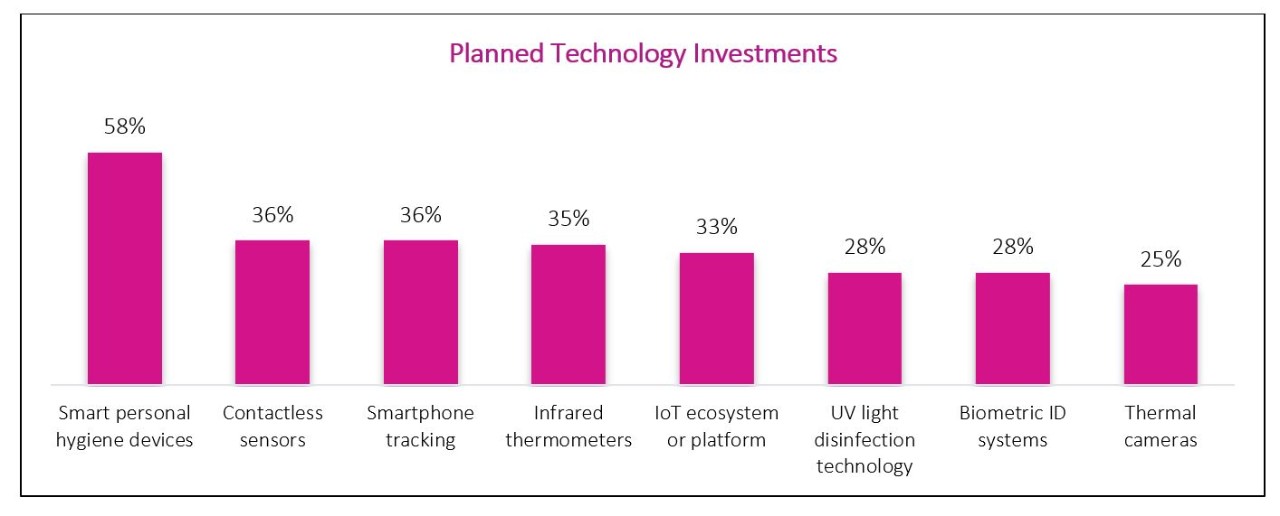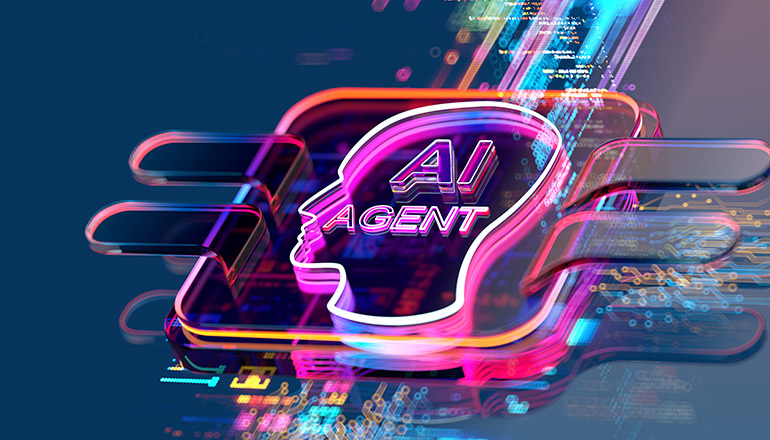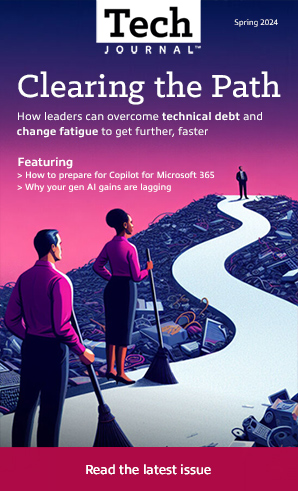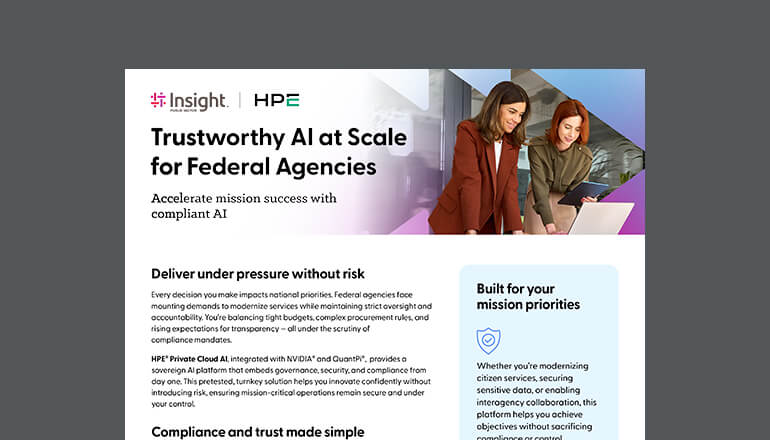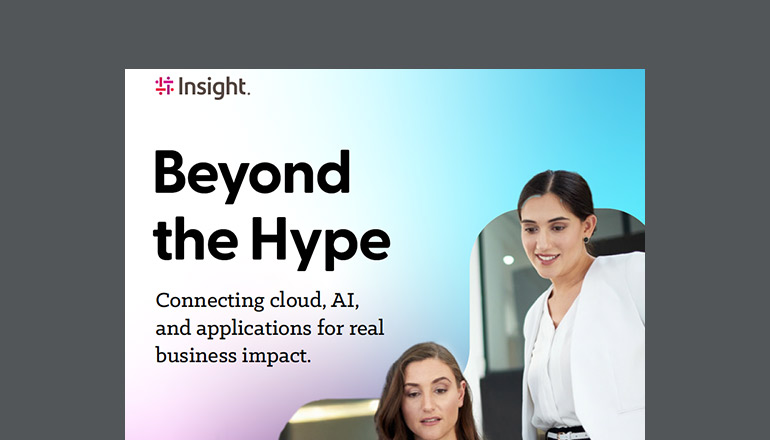Article Democratizing IoT: The Evolution of Connected Platform
Our journey to developing a unified, repeatable Internet of Things (IoT) solution began more than 10 years ago with a simple goal — to enable organizations to procure innovation.
By Jeff Dodge / 11 Jul 2020 / Topics: Artificial Intelligence (AI) As a service Analytics Intelligent edge

New demands around public health and safety have put smart devices and connected technologies in the spotlight in 2020.
In the effort to support a safer return to the workplace, businesses of all sizes are exploring solutions from thermal cameras and occupancy sensors to machine learning for mask detection, contact tracing and more.
The Insight 2020 Intelligent Technology Index reveals enterprise organizations are planning to invest in an average of three or more technologies to help them return to the workplace — many of them being IoT-enabled smart devices and sensors.
But even before the impact of COVID-19 forced a shift in priorities, many businesses were already making the transition to smarter ways of operating with IoT technologies. Restaurants were installing thermal sensors to ensure food safety. Computer vision models were being trained to identify hard hats and other safety equipment in manufacturing or construction zones. Retail or hospitality organizations were exploring the use of people counting to improve guest experiences.
Whatever the desired business outcome, from employee safety to inventory management — there’s a sensor, a system or a device on the market to make it a reality. The real challenge is in deploying, integrating and managing these technologies in a way that supports real-time decision-making.
So how do you move beyond smart devices to embrace the true value of a connected business?
Established IoT foundations
It’s a question we’ve been grappling with at Insight for more than a decade.
Back in 2010, members of what would become our Digital Innovation team began building enterprise IoT platforms for Fortune 50 companies across a range of industries. These were large, cutting-edge solutions architected from the ground up. Implementations could easily take two to three years and cost upwards of six figures.
Over time, we expanded our scope to develop innovative solutions around healthcare, smart cities and public safety, eventually earning the 2016 Microsoft Internet of Things Worldwide Partner of the Year Award.
But as the market reached new levels of maturity and we continued to take on new IoT projects, we began to recognize some core similarities between them.
“Most of the work came down to the same key factors. How do you integrate your devices? How do you manage users? How do you upgrade your system? How do you monitor everything?” Chief Architect, Dan Cokely explains. “It was only once we re-established this baseline that we could start to do some interesting things with the analytics to meet our client’s needs.”
The ultimate goal in designing any IoT solution is to create a system that simplifies and guides decision-making. This means collecting data from vast numbers of connected devices, aggregating it and delivering the right information to the right person at the right time — preferably through a simple user interface.
Rather than repeating the long, expensive process of building a unique IoT platform to accomplish this for each new client, our team realized we could leverage our learnings and experience to simplify and democratize IoT with a more repeatable approach.
Developing a unified solution
Once the need had been identified, we began outlining the scope of our solution based on existing processes and platforms. By taking on the time and cost of development upfront, our goal was to allow other organizations to procure the IT innovation needed to implement business innovation —making it possible to embrace transformation without having to reinvent the wheel.
We worked closely with our partners at Microsoft and Intel to ensure alignment with their product roadmaps and best practices, utilizing best-in-class cloud services and modern edge server architecture to build a robust foundation. But right away, we also identified some key areas where we wanted to break from the mold.
“By taking on the time and cost of development upfront, our goal was to allow other organizations to procure the IT innovation needed to implement business innovation.”
Most IoT platforms are intended for IT teams looking to simplify device integration and data management. While this is helpful for putting critical information at the fingertips of technical experts, we wanted to take our Connected Platform solution one step further.
We envisioned a universal decision-making tool that put data directly in the hands of business owners and employees — one powerful enough to provide end-to-end visibility, but simple enough for anyone to use.
For our development team, this meant the first big challenge was designing a User Experience (UX) which could successfully strike this balance.
“If you look at a lot of the other systems out there, they’re either extremely over complicated or they’re so basic they don’t really do much.” Cokely said. “We were trying to build a simple experience that was still really useful and could provide value for the greatest number of use cases.”
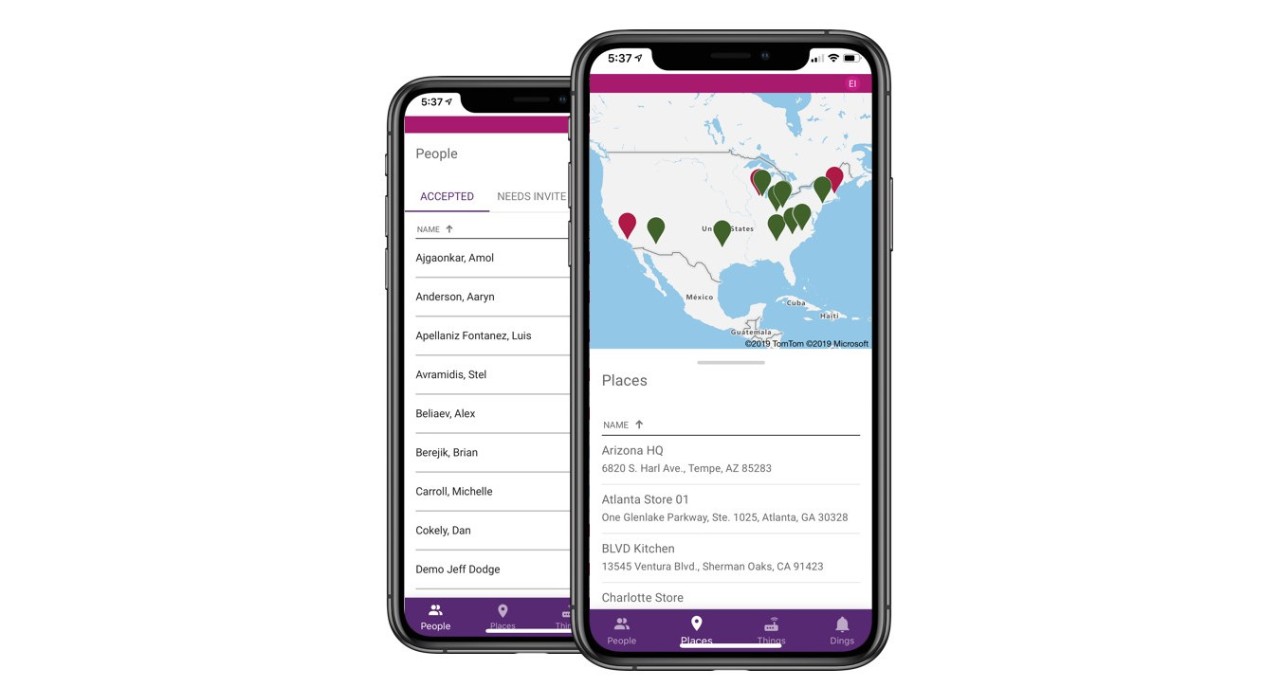
But after distilling all out past projects and experience down to its essence, our team arrived at a simple framework for managing all the various users, locations, devices and notifications that make up a connected system. People, places, things and "dings."
This simple classification became the backbone for our design.
A repeatable framework
As development continued, we worked with clients and co-innovation partners to test and improve upon early iterations of Connected Platform. To simplify deployment, we designed a system which integrates easily with existing networks and Active Directory. We collaborated closely with other teams across Insight to ensure a repeatable model for securely managing every aspect of our solution from hardware to the edge to the cloud. We created market-ready offerings built in Connected Platform around Programmable Logic Control (PLC) management and food safety which we could deploy in as little as a month — a significant improvement on the standard timeline of a custom solution in one to three years.
The result is a powerful, scalable, IoT framework capable of aggregating data from any smart device across an organization into a simple, user-friendly application.
Perhaps even more important, by developing Connected Platform in collaboration with other Insight experts, we’ve created a truly unique solution which encompasses every aspect of implementation, including devices, networking, security and infrastructure support, even Organizational Change Management (OCM) and ongoing managed services.
This end-to-end approach is particularly beneficial for reducing complexity and accelerating deployment when time is a critical factor.
Thermal detection: An internal case study
In recent months, the urgent need to protect the health of our own essential workers has provided a unique window into both the logistics and the value of a rapid IoT solution like Connected Platform.
As precautionary measures were being taken across the U.S., our leadership team at Insight immediately began to look for ways to ensure the safety of our teams. While most of us were able to quickly make the transition to working remotely, many of those at our warehouses and integration labs were deemed essential. Their work directly supported the ongoing mobility and connectivity efforts of other organizations, including those in the healthcare industry.
We quickly recognized the value of our Connected Platform solution as the foundation for a data-driven detection & prevention strategy. In less than two months, we were able to modify and deploy our solution to support thermal cameras, first at our Hanover Park location, quickly followed by 13 of our other largest sites across North America.
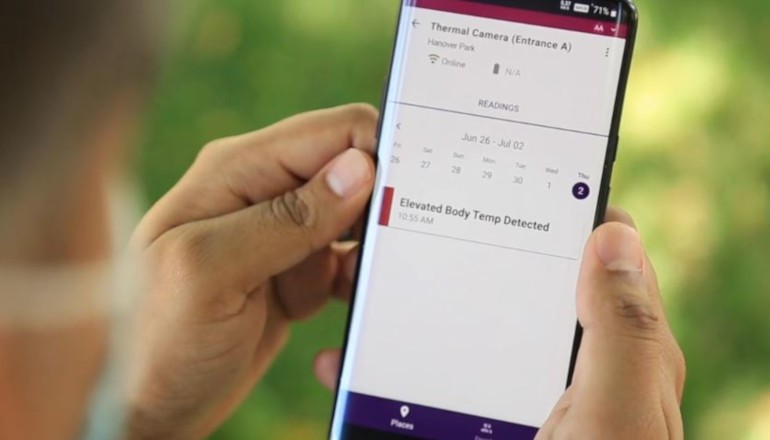
Thinking long term
For those businesses already embracing connected technologies, making the shift to address today’s health challenges is a matter of finding ways to integrate new devices into existing systems. But for those without an existing IoT foundation in place, there’s a lot more to consider.
Solutions like Connected Platform represent an opportunity to reduce the heavy IT lift of transformation by building on the expertise of industry veterans.
While many of the factors driving investments in IoT today will — ideally — have little use in a few years, the underlying architectures that many organizations will adopt to support them will go on to deliver lasting value. Organizations that take a long-term view even when implementing short-term solutions will be better positioned in the future to continue embracing smarter, safer ways of working.
